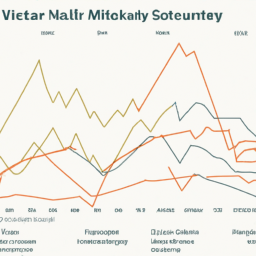Mutual funds are a popular investment tool that pools money from multiple investors to buy a mix of stocks, bonds, and other securities. They offer diversification, professional management, and flexibility. However, not all mutual funds are created equal, and each has its unique investment objective, risk profile, and asset allocation.
One of the key factors that differentiate mutual funds is their allocation toward stocks, which can range from as low as 0% to as high as 100%. Stocks are generally considered risk but also potentially more rewarding than other asset classes, such as bonds or cash. Therefore, the allocation toward stocks can have a significant impact on the performance and volatility of a mutual fund.
So, which type of mutual fund has the highest allocation toward stocks? The answer is equity funds. Equity funds, also known as stock funds, invest primarily in stocks of domestic or foreign companies across various sectors, industries, and market capitalizations. They can be further classified based on their investment style, such as growth, value, or blend, and their geographic focus, such as US, international, or emerging markets.
Equity funds can range from aggressive to conservative, depending on their asset allocation and investment strategy. For example, some equity funds may focus on small-cap or mid-cap stocks, which tend to be more volatile and less established than large-cap stocks. Other equity funds may concentrate on specific sectors, such as technology or healthcare, which can offer higher growth potential but also higher risk.
On the other hand, some equity funds may adopt a more balanced approach by investing in both stocks and bonds, or by using options or derivatives to hedge against market risk. These funds may aim to provide both growth and income, and may be suitable for investors with a moderate risk tolerance or a specific investment goal, such as retirement.
To give you a better idea of the different types of equity funds and their stock allocations, here are some examples:
-
Large-cap equity funds: These funds invest in large-cap stocks, which are typically the biggest and most established companies in the market. They may track indexes such as the S&P 500 or the Dow Jones Industrial Average. Large-cap equity funds may have a stock allocation of around 70-80%.
-
Small-cap equity funds: These funds invest in small-cap stocks, which are typically companies with a market capitalization of less than $2 billion. Small-cap equity funds may have a stock allocation of around 90-100%, as they aim to capture the growth potential of these companies.
-
International equity funds: These funds invest in stocks of companies based outside the US, such as Europe, Asia, or Latin America. International equity funds may have a stock allocation of around 60-70%, as they also consider currency risk and political risk.
-
Sector equity funds: These funds invest in stocks of companies within a specific sector, such as energy, real estate, or consumer staples. Sector equity funds may have a stock allocation of around 90-100%, as they focus on a narrow theme.
-
Balanced equity funds: These funds invest in a mix of stocks and bonds, typically in a ratio of 60:40 or 50:50. Balanced equity funds may have a stock allocation of around 50-60%, as they aim to balance growth and income.
It's important to note that equity funds are not suitable for all investors, as they carry a higher degree of risk than other types of mutual funds. Investors should consider their risk tolerance, investment goals, time horizon, and overall portfolio diversification before investing in equity funds. Moreover, investors should also pay attention to the fees, taxes, and performance of the funds, as these factors can affect their returns.
In conclusion, equity funds are the type of mutual funds that have the highest allocation toward stocks. However, there are many types of equity funds that differ in their investment style, sector focus, and geographic exposure. Investors should do their due diligence and consult with a financial advisor before investing in any mutual fund.
Ticker: SPY, QQQ, VTI, VOO, IWM, IVV, VFINX, VTSAX, VGTSX, VIGAX, VEXAX, FSKAX, VFIAX.
